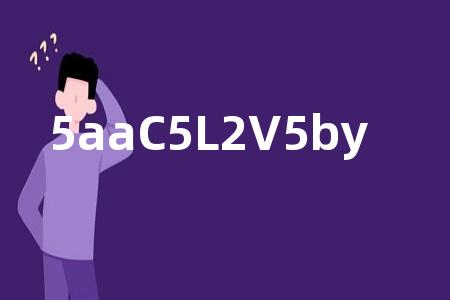如何引导自己走出学习上的「自我否定」?A Path to Self-Affirmation

Overcoming Self-Doubt in Learning: A Path to Self-Affirmation
Learning is a journey that is as much about acquiring knowledge as it is about building self-confidence. However, the path is often fraught with self-doubt, which can impede progress and dampen the spirit of inquiry. To guide oneself out of the quagmire of self-negation, one must embark on a deliberate and structured approach.
Self-Awareness: The First Step
The initial step in overcoming self-doubt is to become aware of the negative thought patterns that lead to it. Recognizing the triggers that cause self-negation is crucial. This self-awareness can be cultivated through journaling, meditation, or simply taking a moment to reflect on one's thoughts after a learning session.
Setting Realistic Goals
Setting achievable goals is a powerful countermeasure to self-doubt. When goals are too lofty, the inevitable failure to meet them can reinforce negative beliefs about one's abilities. By setting smaller, attainable goals and celebrating each achievement, no matter how minor, one can build a positive feedback loop that fosters self-confidence.
Embracing Failure as a Learning Tool
Reframe failure as a necessary part of the learning process rather than a personal shortcoming. Each mistake is an opportunity to learn and grow. By adopting a growth mindset, one can view challenges as opportunities to improve rather than as insurmountable obstacles.
Seeking Supportive Communities
Surrounding oneself with a supportive community can be immensely beneficial. This could be a study group, a mentor, or an online forum where one can share experiences and receive encouragement. The right community can provide the validation and advice needed to navigate through self-doubt.
Practicing Self-Compassion
Being kind to oneself is often the most overlooked aspect of overcoming self-doubt. Practicing self-compassion involves treating oneself with the same kindness and understanding that one would offer to a friend. It's important to acknowledge that everyone makes mistakes and that it's okay not to be perfect.
Continuous Practice and Skill Refinement
Consistent practice is the cornerstone of improvement. The more one practices, the more comfortable they become with the material, which in turn reduces self-doubt. It's also important to refine skills by seeking feedback and making adjustments based on it.
Celebrating Progress
Recognizing and celebrating progress, no matter how small, is essential. This not only boosts motivation but also reinforces the belief that one is capable of achieving more. Keeping a record of achievements can serve as a reminder of how far one has come.
Overcoming self-doubt in learning is a process that requires patience, self-compassion, and a strategic approach to personal growth. By cultivating self-awareness, setting realistic goals, embracing failure, seeking support, practicing self-compassion, continuously improving through practice, and celebrating progress, one can transform self-doubt into self-affirmation and emerge as a more confident learner.
如何引导自己走出学习上的「自我否定」?
学习是一段旅程,它既关乎知识的积累,也关乎自信的建立。然而,这条道路常常充满了自我怀疑,这可能会阻碍进步并抑制探究精神。要引导自己走出自我否定的泥潭,必须采取一种刻意和有结构的方法。
自我意识:第一步
克服自我怀疑的第一步是意识到导致它的负面思维模式。认识到引起自我否定的触发因素至关重要。这种自我意识可以通过写日记、冥想或在学习会话后花时间反思自己的思想来培养。
设定现实目标
设定可实现的目标是对抗自我怀疑的强大对策。当目标过于宏伟时,未能实现它们就可能加强关于自己能力的负面信念。通过设定较小、可达成的目标,并庆祝每一个成就,无论多小,都可以建立一个积极的反馈循环,促进自信。
将失败视为学习工具
将失败重新定义为学习过程中必要的一部分,而不是个人的不足。每个错误都是学习和成长的机会。通过采取成长型思维模式,可以将挑战视为改进的机会,而不是不可逾越的障碍。
寻求支持性社群
将自己置于一个支持性社群中可以极大地有益。这可以是一个学习小组、导师或一个在线论坛,在这里可以分享经历并获得鼓励。正确的社群可以提供克服自我怀疑所需的认可和建议。
练习自我同情
对自己友善通常是克服自我怀疑最被忽视的方面。练习自我同情包括以对待朋友的同样善意和理解来对待自己。重要的是要承认每个人都会犯错,并且不完美也是可以的。
持续练习和技能完善
持续的练习是改进的基石。一个人练习得越多,对材料就越熟悉,这反过来又减少了自我怀疑。同样重要的是通过寻求反馈并根据反馈进行调整来完善技能。
庆祝进步
认识并庆祝进步,无论多小,都是必要的。这不仅提高了动力,而且加强了一个人能够实现更多的信念。记录成就可以作为提醒一个人已经走了多远的标记。
在学习中克服自我怀疑是一个需要耐心、自我同情和个人成长策略性方法的过程。通过培养自我意识、设定现实目标、拥抱失败、寻求支持、练习自我同情、通过练习不断改进以及庆祝进步,可以将自我怀疑转化为自我肯定,并成为一个更自信的学习者。
相关文章
- 如何引导自己走出学习上的「自我否定」?A Path to Self-Affirmation
- 如何提高英语听力?如何提高词汇量?
- 孔雀用英语该怎么说呢?孔雀的英语词汇
- severe、strict、harsh三个严厉的英文
- 胰岛素的英语是什么?胰岛素用英语怎么说?
- 每天只吃一顿饭 The Impact of Eating Only One Meal a Day
- 雨伞的英语怎么说?雨伞的英语作文
- 英语中冠词的用法及常见的疑问
- 打嗝的英语怎么说?
- 英汉双语散文:Kindness 善良
- 中考英语作文:描述你最喜欢的一本书
- 小升初英语作文:描述一次你参加的有趣的学校活动
- 英语作文:早起空腹喝水好不好 ?
- 英汉双语散文:Time 时间 时间能治愈一切创伤
- 小升初英语作文:描述一次你参加的社区服务活动
- 双语:世界防治疟疾日
- 如何应对英语学习中的困难?
- 小升初英语作文:描述一次你帮助别人或别人帮助你的经历
- 爬山的英语作文 2篇
- 人参的英语怎么说?人参在日常生活中怎么用?